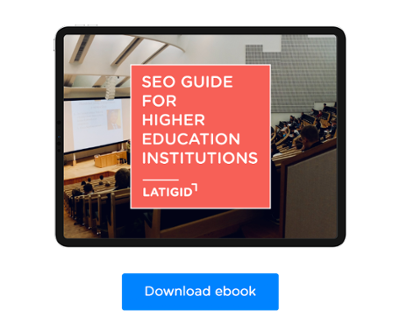
It is more important than ever for schools to have a strong marketing strategy. Marketing for schools can be a daunting task, but it is essential for attracting and retaining students. This ultimate guide will provide you with all the information you need to market your school effectively.
Understands the pains, needs and the whole process of choosing a school from the point of view of the student and their parents

Choosing a school is a significant decision that involves careful consideration of various factors from both the student's and the parents' perspectives. Here's an overview of the pains, needs, and the entire process of selecting a school:
Pains and concerns:
- Financial concerns: One of the primary concerns for parents is often the cost of education. Private schools, in particular, can be expensive, and financial considerations weigh heavily on the decision-making process.
- Quality of education: Parents want to ensure that the chosen school provides a high-quality education that prepares their child for future success. This may involve looking at academic achievements, faculty qualifications, and extracurricular offerings.
- Distance and commute: The location of the school and the daily commute can be a significant pain point. Parents want a balance between a school that offers excellent education and one that is reasonably accessible.
- Social environment: Both parents and students may be concerned about the social environment of the school. Factors like diversity, inclusivity, and the overall culture play a crucial role in the decision-making process.
Needs:
- Academic programs: Parents and students often look for schools that offer a well-rounded curriculum with a focus on academic excellence. Specialized programs or unique teaching methods may also be a deciding factor.
- Extracurricular activities: A school that provides a variety of extracurricular activities, such as sports, arts, and clubs, is often preferred. These activities contribute to a holistic education and personal development.
- Support services: Schools that offer support services for students with diverse needs, such as special education programs, counseling, or tutoring, may be especially appealing to parents.
- Communication and involvement: Parents often seek schools that foster open communication and encourage parental involvement. Regular updates on a student's progress and opportunities for parent-teacher interactions are valued.
The Decision-Making Process:
- Research: Parents and students typically start by researching potential schools. This involves looking at school websites, reading reviews, and seeking recommendations from friends, family, or educators.
- Visits and tours: Physical visits to schools, attending open houses, and taking guided tours are essential steps. This allows parents and students to get a feel for the school's environment and facilities.
- Application process: Once a shortlist is created, there is the formal application process. This may involve submitting academic records, recommendation letters, and participating in interviews or entrance exams.
- Decision time: After receiving acceptance letters, families weigh their options based on the aforementioned factors. Financial aid and scholarship opportunities may also play a role in the final decision
Prioritize your website's design and functionality

Designing a school website requires careful consideration of factors that cater to both current students and parents, as well as potential students and their families. Here's a prioritized list for designing a school website:
Clear navigation: Use clear and organized dropdown menus for easy navigation to various sections such as academics, admissions, extracurricular activities, and contact information.
Homepage highlights: Showcase important information prominently on the homepage, such as upcoming events, announcements, and links to key sections.
Responsive design: Ensure that the website is responsive and optimized for various devices, especially mobile phones, as parents and students may access it on the go.
Calendar of events: Include an interactive calendar highlighting school events, holidays, and important dates. Allow users to filter events by category.
Admissions information Provide a clear and concise guide to the admissions process, including application forms, deadlines, and any required documentation.
Academic information: Include a comprehensive course catalog with detailed information about each academic program, including course descriptions, faculty profiles, and any special features.
Visual appeal: Use high-quality images that capture the school's atmosphere, facilities, and students engaged in various activities. Visuals contribute to the overall appeal of the website.
Contact information: Ensure that contact information, including phone numbers and email addresses for key staff members, is easily accessible on every page.
Parent and student portals: If applicable, provide secure login portals for parents and students to access personalized information such as grades, attendance records, and important announcements.
Interactive forms: Include interactive and user-friendly forms for various purposes, such as contacting the school, requesting information, or submitting applications.
Social media integration: Integrate links to the school's official social media profiles to keep the community updated on news, events, and achievements.
News and updates: Maintain a section for news and updates, featuring articles, blog posts, or newsletters that highlight school achievements, student accomplishments, and important announcements.
Accessibility features: Ensure that the website is designed with accessibility in mind, including alt text for images, readable fonts, and adherence to accessibility standards.
Security measures: Implement security measures to protect sensitive data, especially if the website involves personal information related to students and parents.
Feedback mechanism: Include a feedback form or survey to gather input from parents, students, and other users for continuous improvement.
Improve your search engine ranking with SEO

Improving your school's search engine ranking requires a strategic approach to search engine optimization (SEO). Here are key steps you can take to enhance your school's online visibility and boost its SEO:
Keyword research: Identify relevant keywords that prospective students and parents might use when searching for a school. This could include terms related to your location, academic programs, extracurricular activities, and other unique offerings.
Optimize website Content: Integrate targeted keywords naturally into your website's content, including page titles, headers, meta descriptions, and body text. Ensure that the content is informative, engaging, and valuable to users.
Mobile-friendly design: Google prioritizes mobile-friendly websites in its rankings. Ensure that your school website is responsive and provides a seamless experience across various devices, especially mobile phones.
Page speed optimization: Improve the loading speed of your website. Slow-loading pages can negatively impact user experience and search rankings. Optimize images, leverage browser caching, and minimize code to enhance page speed.
Quality backlinks: Build high-quality backlinks from reputable and relevant websites. This can be achieved through outreach, partnerships, or by creating shareable content that naturally attracts links.
Local SEO: Optimize your website for local search by claiming and verifying your Google My Business listing. Provide accurate and up-to-date information about your school, including address, phone number, and business hours.
Create compelling content: Regularly publish high-quality, relevant content that addresses the needs and interests of your target audience. This can include blog posts, articles, videos, and other media. Engaging content encourages users to spend more time on your site.
Use social media: Maintain an active presence on social media platforms. Social signals are considered by search engines, and social media can be an effective way to share content and engage with your school community.
Optimize images: Use descriptive file names and alt text for images. This not only improves accessibility but also provides search engines with more information about the content of your pages.
Structured data markup: Implement structured data markup (schema.org) to provide search engines with additional information about your school. This can enhance your search results with rich snippets, making them more informative and attractive.
User experience (UX): Prioritize a positive user experience. Easy navigation, clear calls to action, and a well-designed website contribute to user satisfaction, which can indirectly impact search rankings.
Monitor analytics: Use tools like Google Analytics to track website performance. Analyze user behavior, traffic sources, and other metrics to identify areas for improvement and capitalize on successful strategies.
Local citations: Ensure that your school's name, address, and phone number (NAP) are consistent across online directories and local citations. This helps with local search engine optimization.
Regularly update content: Keep your website content up to date. Search engines favor websites that regularly publish fresh and relevant content. This could include updates about events, news, or changes within the school.
Optimize for voice search: With the rise of voice-activated devices, optimize your content for voice search by using natural language and answering common questions your audience might have.
Watch this video to get a better understanding of what SEO is, its importance, ranking factors and some tips for improving your SEO.
Develop content for social media and try to interact with your audience at every opportunity

Creating engaging content for a school's social media channels is crucial for building a strong online community and fostering interaction with your audience. Here's a content plan that incorporates various types of posts and encourages audience engagement:
Welcome posts:
- Start with a warm welcome post for new followers, introducing your school, its values, and what makes it unique.
- Encourage new followers to introduce themselves in the comments and share their connection to the school.
Back-to-school countdown:
- Share countdown posts as the new school year approaches, creating anticipation and excitement.
- Ask followers about their back-to-school traditions or what they are looking forward to.
Student and staff spotlights:
- Highlight individual students, teachers, and staff members through posts or short videos.
- Encourage the featured individuals to share their experiences and achievements and ask followers to share their own stories.
Interactive polls:
- Use polls to gather opinions and preferences from your audience. For example, ask about favorite school events, preferred extracurricular activities, or upcoming themes for school spirit days.
Parent-teacher collaboration:
- Showcase instances of successful parent-teacher collaboration or projects.
- Ask for tips and advice from parents on how they support their children's education.
Achievements and milestones:
- Celebrate academic and extracurricular achievements of students and staff.
- Invite followers to share their accomplishments or those of their children.
Live Q&A sessions:
- Host live Q&A sessions with teachers, administrators, or special guests.
- Allow followers to submit questions in advance and answer live questions during the session.
Community involvement:
- Highlight the school's involvement in the local community through events, partnerships, or service projects.
- Encourage followers to share their own community engagement experiences.
Themed challenges:
- Create and promote challenges related to school spirit, creativity, or healthy habits.
- Ask followers to participate and share their entries using a specific hashtag.
Seasonal content:
- Tailor posts to fit seasonal themes, such as back-to-school, holidays, or end-of-year celebrations.
- Run contests or challenges based on the current season.
Virtual tours:
- Offer virtual tours of different areas of the school, classrooms, or special facilities.
- Allow followers to request specific areas they would like to see.
Educational tips and resources:
- Share educational tips, study techniques, or resources for parents to support their children's learning.
- Encourage followers to share their own educational tips.
Feedback and suggestions:
- Regularly seek feedback on school activities, events, or social media content.
- Respond to comments and messages, acknowledging suggestions and thanking followers for their input.
Watch this video of a speaker at one of the world's biggest conferences, TED Talks, where she presents the reasons why it's important for schools to be present on social media.
Incorporate video content into your marketing strategy
Integrating video content into your school's marketing strategy is an excellent way to engage your audience and showcase the unique aspects of your educational institution. Here's a comprehensive plan for incorporating video into your school marketing efforts:
Welcome video:
- Create a warm and inviting welcome video featuring key staff members, teachers, and students.
- Highlight the school's values, mission, and what sets it apart from others.
Virtual campus tour:
- Develop a virtual tour video showcasing different areas of the campus, classrooms, libraries, sports facilities, and other notable spaces.
- Add commentary to provide insights into the facilities and their significance.
Student testimonials:
- Feature video testimonials from current students sharing their experiences at the school.
- Ask students to discuss academic achievements, extracurricular activities, and the supportive community.
Teacher profiles:
- Create short video profiles of teachers and staff members, allowing them to share their passion for education and their teaching approach.
- Highlight their expertise, dedication, and any unique qualities they bring to the school.
Academic program overview:
- Produce videos that provide an overview of each academic program offered by the school.
- Include information on curriculum, teaching methodologies, and any special features of the programs.
Extracurricular activities:
- Showcase the variety of extracurricular activities available, such as sports, arts, music, and clubs.
- Feature footage of students participating in these activities and interviews with coaches or activity leaders.
Event highlights:
- Capture and share highlights from school events, performances, and celebrations.
- Create event recap videos to showcase the vibrant and active school community.
Parent perspectives:
- Interview parents and guardians about their experiences with the school.
- Allow them to share how the school has positively impacted their children and family life.
Success stories:
- Share success stories of alumni who have achieved notable accomplishments after graduating.
- Highlight their career paths, achievements, and how the school contributed to their success.
Day in the life videos:
- Develop "Day in the Life" videos featuring students from different grades or programs.
- Show their daily routines, classes, interactions with teachers, and participation in activities.
How-to guides:
- Create instructional videos providing useful information for parents and students.
- Examples include how to navigate the admissions process, tips for effective studying, or guidance on using school resources.
Virtual open house:
- Host a virtual open house event, and create videos for different sections, such as admissions, academics, extracurriculars, and Q&A sessions.
- Allow prospective students and parents to virtually explore the school's offerings.
Behind-the-scenes:
- Offer behind-the-scenes glimpses into the daily life of the school.
- Show the preparation and coordination involved in organizing events or the effort that goes into maintaining the campus.
Interactive webinars:
- Host live webinars or virtual town halls to address common questions and concerns from parents and prospective students.
- Use video to create a personal connection and facilitate real-time interaction.
Interactive challenges:
- Engage your audience with interactive challenges or contests through video content.
- Encourage participants to create and submit their videos, fostering a sense of community involvement.
Watch this video to get a better understanding of what video marketing is, why it should be used even more and the whole process of creating video content.
Invest in digital advertising on platforms such as Google, Meta, LinkedIn or even TikTok

Investing in digital advertising can significantly boost your school's visibility and attract prospective students and parents. Each platform offers unique features and demographics, so consider tailoring your approach to the characteristics of your target audience. Here's a guide on leveraging digital advertising on platforms such as Google, Meta (Facebook and Instagram), LinkedIn, and TikTok:
Google Ads:
- Search Ads: Utilize Google Search Ads to appear at the top of search results when users look for relevant keywords like "best schools in [your location].”
- Display Ads: Create visually appealing display ads that can be shown across the Google Display Network on various websites.
- Video Ads on YouTube: Use YouTube video ads to showcase your school through virtual tours, testimonials, and highlights of academic and extracurricular activities.
Meta (Facebook and Instagram):
- Targeted Ads: Leverage the powerful targeting options on Facebook and Instagram to reach specific demographics, such as parents with school-aged children or individuals interested in education.
- Carousel Ads: Create carousel ads on Instagram or Facebook to showcase different aspects of your school, such as academics, extracurricular activities, and campus life.
- Lead Generation Ads: Implement lead generation ads to collect information from potential students and parents directly within the platform.
LinkedIn:
- Sponsored content: Use sponsored content on LinkedIn to promote your school to a professional audience, including parents and potential partners.
- LinkedIn Ads for education: Utilize LinkedIn's specific ad format for educational institutions to target professionals interested in advancing their education or exploring educational options for their children.
- Targeted job titles: Leverage LinkedIn's targeting options to reach parents who hold specific job titles or work in certain industries.
TikTok:
- Engaging videos: Create short and engaging videos showcasing the vibrant aspects of your school, such as student life, events, and unique features.
- Hashtag challenges: Participate in or create hashtag challenges to encourage user-generated content related to your school.
- Influencer partnerships: Collaborate with TikTok influencers who align with your school's values to reach a wider audience.
Key Tips for Digital Advertising:
- Audience targeting: Define your target audience clearly based on demographics, interests, and behavior. Tailor your ads to resonate with their needs and aspirations.
- Compelling visuals and copy: Use high-quality visuals and compelling ad copy to grab attention and convey your school's unique selling points.
- Landing pages: Create dedicated landing pages that align with your ad content. Ensure these pages provide relevant information and have clear calls-to-action.
- Analytics and optimization: Regularly monitor the performance of your ads using analytics tools provided by each platform. Optimize your campaigns based on key metrics such as click-through rates, conversions, and engagement.
- Budget management: Set a realistic budget for your digital advertising campaigns. Test different ad creatives and targeting options to find the most effective strategies.
- Compliance and guidelines: Adhere to the advertising guidelines and policies of each platform. Familiarize yourself with rules related to education advertising to ensure compliance.
To better understand what digital advertising is and the benefits it can bring to your school, watch this video.
About Latigid
We are an Education Marketing Agency. We help you grow by increasing website traffic, generating more student leads, and closing those leads into enrollment. With a deep understanding of the latest industry trends and best practices, we are well equipped to help your institution grow.
If you are looking for an Education Marketing Agency to partner with, check our page to see what we can do for you!
Download our SEO guide and learn how to build a strategy to optimize your Higher Education Institution's website





